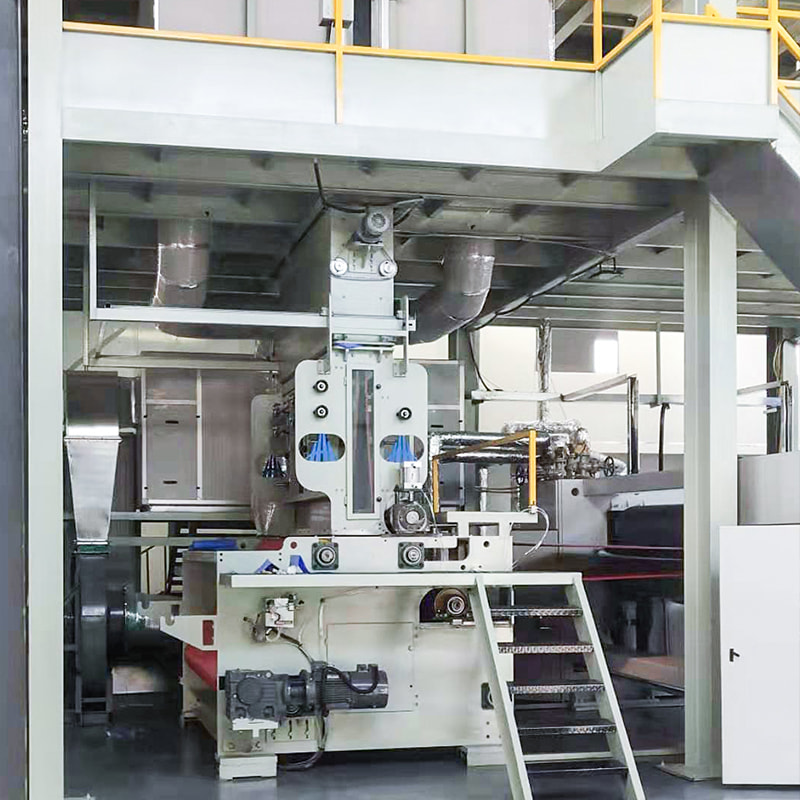Selecting the right equipment for manufacturing nonwoven fabric is a critical decision that directly affects product quality, production efficiency, and long-term profitability. A common question among manufacturers is whether to invest in a single-beam spunbond machine or opt for a multi-beam system. Each has distinct advantages, and the choice depends on production goals, budget considerations, and end-use applications. The S nonwoven fabric making machine, designed with a single spunbond beam, has gained popularity due to its efficiency, cost-effectiveness, and suitability for a wide range of applications. However, understanding how it compares with double-beam and multi-beam systems helps businesses make a more informed decision.
A single-beam spunbond machine operates with a straightforward yet highly efficient process. Polypropylene granules are melted, extruded through a spinneret, and stretched into continuous filaments, which are then laid onto a conveyor belt to form a web. The final step involves thermal bonding, resulting in a durable and uniform fabric. This design allows for stable production with a focus on maintaining consistent fabric quality. The S nonwoven fabric making machine is widely used in producing materials for shopping bags, hygiene products, furniture linings, and agricultural covers, where strength, cost-effectiveness, and simplicity are primary concerns. One major advantage of this setup is its lower energy consumption and compact footprint, making it an attractive option for businesses with limited space or a focus on reducing operational costs.
A multi-beam system, such as double-beam (SS) or triple-beam (SSS) machines, follows a similar core principle but introduces additional extrusion beams to improve fabric properties. More beams mean a higher filament density, leading to stronger and more uniform fabric with improved tensile strength and softness. This makes multi-beam machines well suited for applications requiring enhanced durability, such as medical-grade fabrics, filtration materials, and protective clothing. The added complexity of the system allows for a broader range of fabric weights and thicknesses, but it also results in higher investment costs and more intricate maintenance requirements. Production lines using multi-beam machines require precise calibration, skilled labor, and additional energy input, which can increase operational expenses.

Fabric properties play a significant role in determining the right machine type. Single-beam systems typically produce fabric within a filament denier range of 1.8 to 2.5D and a weight range of 10-200 GSM. This covers most standard applications where cost and ease of production are top priorities. Multi-beam systems, particularly those that incorporate meltblown technology (SMS, SMMS, SSMMS), allow for finer control over fabric properties such as breathability, filtration efficiency, and liquid resistance. This makes them suitable for medical and hygiene applications where additional performance characteristics are essential. While multi-beam configurations expand production possibilities, many manufacturers find that an S nonwoven fabric making machine meets their needs without unnecessary complexity or excess costs.
Another important factor is production efficiency and ease of maintenance. A single-beam system has fewer mechanical components, which reduces the likelihood of breakdowns and simplifies routine maintenance. Operators require less technical training, and machine adjustments are more straightforward. This translates to reduced downtime and lower labor costs. Multi-beam machines, on the other hand, involve more moving parts, requiring careful synchronization of multiple extrusion and bonding processes. More advanced control systems are needed to maintain consistency across different layers, which increases both the initial investment and ongoing maintenance efforts. Businesses looking for a system that minimizes operational complexity often find that an S nonwoven fabric making machine is the most practical solution.
Investment considerations should go beyond the initial purchase price. While multi-beam systems offer greater versatility, they require a substantial commitment in terms of infrastructure, training, and raw material optimization. A single-beam machine is a strategic choice for manufacturers focusing on steady production with predictable market demand. Many businesses start with this setup and later scale up if higher performance fabrics become a necessity. The S nonwoven fabric making machine remains an efficient and cost-effective option for those aiming to balance quality, efficiency, and affordability. Making the right decision requires evaluating long-term production goals and ensuring that the chosen system aligns with business objectives.







 English
English 中文简体
中文简体 русский
русский عربى
عربى





